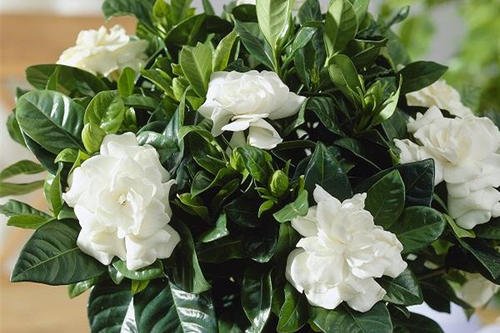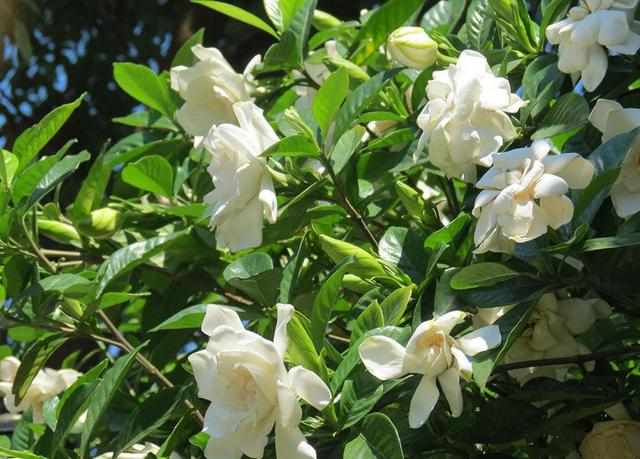As I strolled through the verdant gardens, my senses were captivated by the ethereal fragrance of a delicate flower. Its ivory petals, adorned with a radiant yellow center, seemed to whisper tales of distant lands. This enchanting bloom was the Cape Jasmine, a botanical wonder that has captivated hearts for centuries.

Image: www.rayagarden.com
The Cape Jasmine, also known as Gardenia Jasminoides, is an evergreen shrub native to the subtropical regions of Asia and Africa. Its glossy, deep green leaves and intoxicating fragrance have made it a beloved garden favorite worldwide.
Unveiling the History and Meaning of the Cape Jasmine
The Cape Jasmine holds a rich history and cultural significance. Its origins can be traced back to ancient China, where it was revered as a symbol of purity and grace. In Japan, it is known as “Kuchinashi” and is often used in traditional bridal bouquets to represent joy and prosperity.
In the Victorian era, the Cape Jasmine became a symbol of secret love and romance. Its sweet fragrance was believed to convey messages of affection, leading to its nickname, “the Lover’s Flower.” Today, it remains an elegant addition to gardens and a popular choice for weddings and special occasions.
Cultivating the Cape Jasmine: A Labor of Love
To cultivate the Cape Jasmine successfully, it is essential to understand its unique growth requirements. It prefers well-drained, slightly acidic soil rich in organic matter. Ensure adequate sunlight but avoid intense direct sunlight, as it can scorch the leaves.
Regular watering is crucial, especially during hot, dry periods. Avoid overwatering, as this can lead to root rot. Fertilizing with a balanced, slow-release fertilizer once a month during the growing season will provide the nutrients it needs to thrive.
Expert Tips for Nurturing a Thriving Cape Jasmine
Based on my experience as a gardener, I have compiled some expert tips to help you cultivate a healthy and vibrant Cape Jasmine:
- Prune regularly: Pruning encourages new growth and helps maintain a shapely plant. Prune spent blooms and remove any dead or damaged branches as needed.
- Provide support: As the plant matures, its branches can become heavy. Provide stakes or trellises to support the branches and prevent them from breaking.
- Protect from pests and diseases: Cape Jasmines are generally resilient, but they can be susceptible to pests like aphids and mealybugs. Inspect your plants regularly and treat any infestations promptly with appropriate insecticides.

Image: www.rayagarden.com
Frequently Asked Questions About the Cape Jasmine
Q: How often should I water my Cape Jasmine?
A: Water your Cape Jasmine regularly, especially during dry spells. Allow the soil to dry slightly between waterings.
Q: What type of fertilizer should I use?
A: Use a balanced, slow-release fertilizer once a month during the growing season to provide essential nutrients.
Q: How do I prune my Cape Jasmine?
A: Prune spent blooms and remove any dead or damaged branches to encourage new growth and maintain a shapely plant.
How To Care For Cape Jasmine
Conclusion
The Cape Jasmine is a botanical gem that brings beauty, fragrance, and a touch of history to any garden. By following these care tips and expert advice, you can cultivate a thriving Cape Jasmine that will delight you with its exquisite blooms for years to come.
Do you have any questions or experiences to share about cultivating the Cape Jasmine? I invite you to reach out and join our community of passionate gardeners!